Back where he belongs! 90-year-old pilot who flew in World War Two returns to the skies in Tiger Moth biplane like one he learnt to fly in
-
•Fred Lamprey, part of the RAF Volunteer Reserve, was called up in 1942 and learnt to fly in the magnificent Tiger Moth biplane in Warwickshire
-
•Got his wings in Canada in 1944 after two years of training
-
•Returned to the skies last year for an experience flight at Netherthorpe Airfield near Worksop, South Yorkshire
-
•Is now a frequent flier and begs his instructor to let him do acrobatics
-
•'You can loop ‘em, roll ‘em, spin ‘em and side-slip them,' says pilot, 90
PUBLISHED: 17:19, 6 October 2013 | UPDATED: 19:44, 6 October 2013
For most remaining World War Two pilots, taking to the skies in a 1940s plane is a distant memory - one that is unlikely to ever be repeated.
But, having not sat at the controls for more than seventy years, one 90-year-old pilot is now regularly flying a Tiger Moth biplane - and is even doing aerobatic loop the loops in the skies above the Peak District.
Flight Lieutenant Fred Lamprey of the Royal Air Force Volunteer Reserve (RAFVR) has been flying in planes almost identical to the one he learnt to fly in when he was called up in 1942.
Scroll down for video
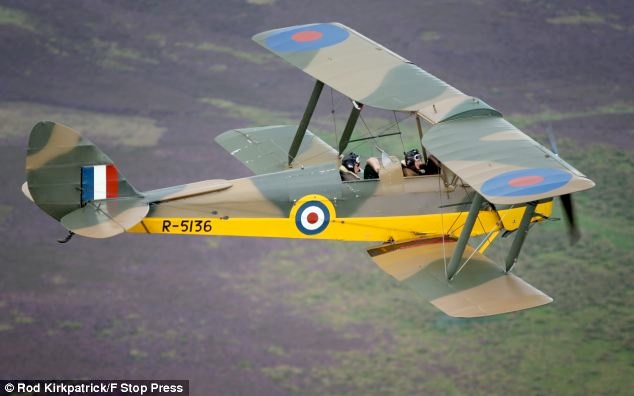
Up and away: Fred Lamprey, pictured in the front seat, flies above purple heather in the Peak District on his latest flight in a Tiger Moth

Daredevil: The former RAF pilot, pictured in flying goggles and hat, takes a turns the plane, which he first learnt to fly in 1942

In the driving seat: Mr Lamprey, from Ackworth, West Yorkshire, flew in the Tiger Moth for the first time in seventy years last autumn
WWII vet, 90, flies Tiger Moth biplane again
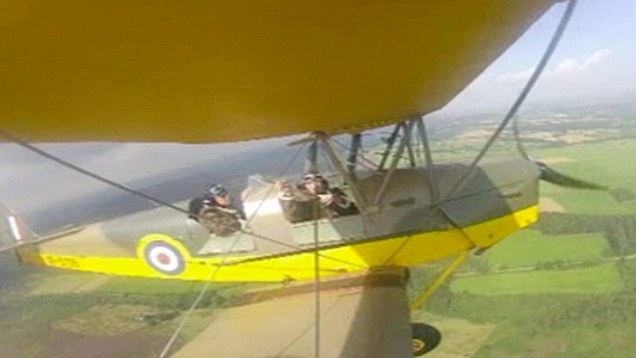
Mr Lamprey said: 'It doesn’t seem over seventy years since I first soloed in one.
'They’re a very interesting and versatile aircraft. You can loop ‘em, roll ‘em, spin ‘em and side-slip them.
'The petrol tank is between the wings above you and it’s a gravity feed. If you roll it the engine can stop so you have to go into a dive to get the fuel flowing again and the engine restarted.'
'Flying is very nostalgic. I remembered the controls instantly – it’s like riding a bike.'

Back in time: Fred Lamprey after being awarded his wings in 1944 after two years of training
Flying Instructor, Will Flanagan said the daredevil often begs him to push the aircraft to its limits - and frequently asks if he can loop the plane.
He said: 'He’s got the lightest of touch. It’s like with golf – it’s technique not strength that counts.
'He’s so sharp he must have been an amazing pilot in his day.'
Mr Lamprey, from Ackworth, West Yorkshire, first went up for an experience flight in the 1940 Tiger Moth last Autumn to celebrate his 90th birthday at Netherthorpe Airfield near Worksop, South Yorkshire.
He now regularly returns to the airfield to take to the skies.
His selection for flying training began in 1942 when he was nineteen-years-old, where he was put through tough medical, dental and physical tests.
Mr Lamprey said: 'We had to be good at maths too. I was asked to guess the length of a telegraph pole outside and how to work out the volume of the ink-well on the desk. I was lucky I’d just finished school so it wasn’t too hard.'
The pilot was then put on a Pilot Navigator and Bomb Aimer course and was sent to the Aircrew Receiving Centre at Lords cricket ground where his night vision was tested.
At the Initial training Wing in Scarborough, Mr Lamprey joined other new pilots learning meteorology, navigation, armament, clay pigeon shooting, signals and aircraft recognition.
Mr Lamprey said: 'After three months I was issued with my Kaypook [inner flying suit], outer flying suit, helmet and goggles.
'I was sent to grading school at Southam, near Leamington Spa, Warwickshire.
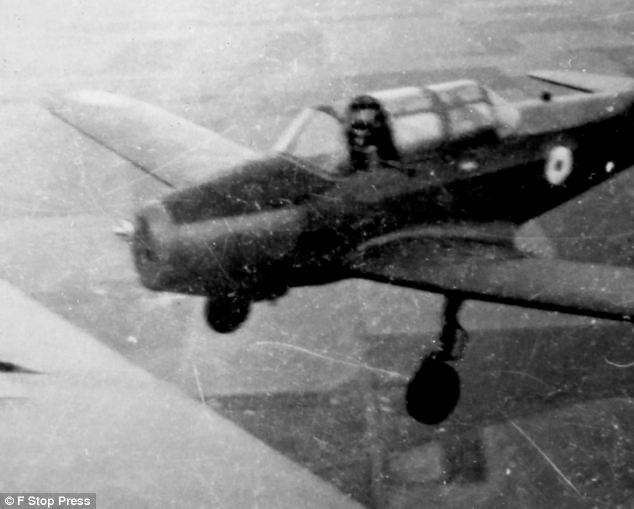
In action: Mr Lamprey flies a Fairchild Cornell - another training aircraft - over Canada in 1943
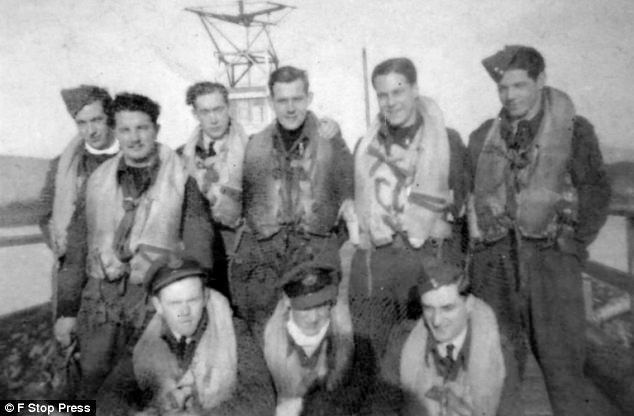
One of the boys: A photo showing Fred Lamprey, bottom right, and his Sunderland flying boat crew
'I had a good instructor. He first took me out and taught me how to swing the prop to get it started, sometimes you had to tap the magneto with a stone.
'The first time I flew a Tiger Moth it was scary. I’d never flown before. It looked and felt very big.
'When I first went solo my instructor said, "You’ll be ok" but warned me it would feel lighter with just me in it. I was fifteen feet too high for my first landing and had to go round again.
'Our first flight was a half-hour familiarisation flight. Then it was turns and landings. We learned to do two controlled spins in either direction and were checked by the Chief Flying Instructor at eight and then twelve hours before our first solo flights.
'Those who didn’t pass these tests became navigators and bomb aimers.'
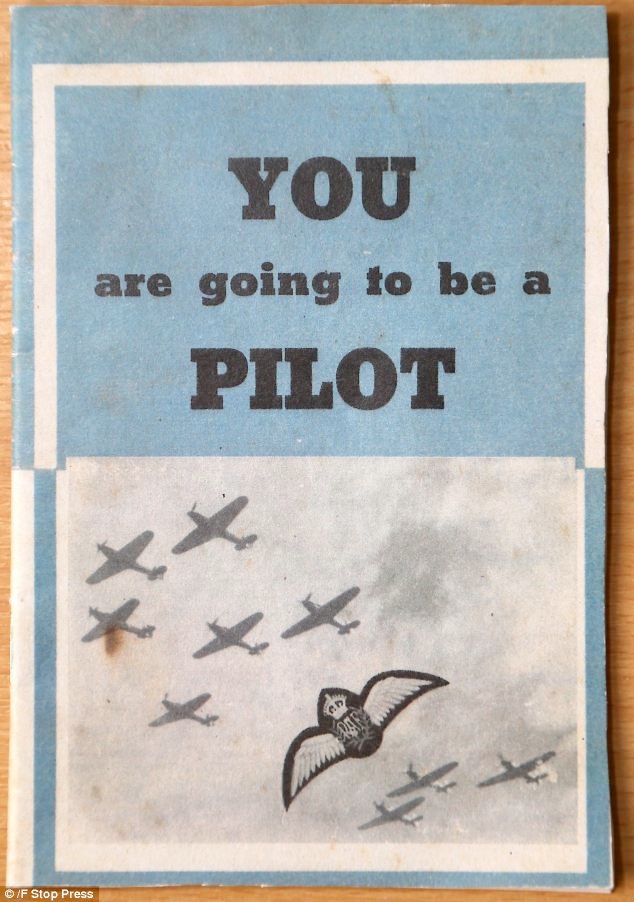
In training: Fred Lamprey's 'You are going to be a pilot' booklet, given to all trainees, from 1942
He continued: 'I was posted to Manchester into a unit for overseas postings. I nearly went to Rhodesia but was ill with shingles for a week so took the next draft to Canada.
'I sailed from Greenock to New York on The Queen Mary. She was painted Battleship Grey and we zig-zagged our way across The Atlantic unescorted. We were used to city black-outs and New York looked amazing all lit up.
'We caught a train to Canada and I began more training flying Cornells. We learned formation, night and cross-country flying, circuits and landings, instruments and aerobatics.'
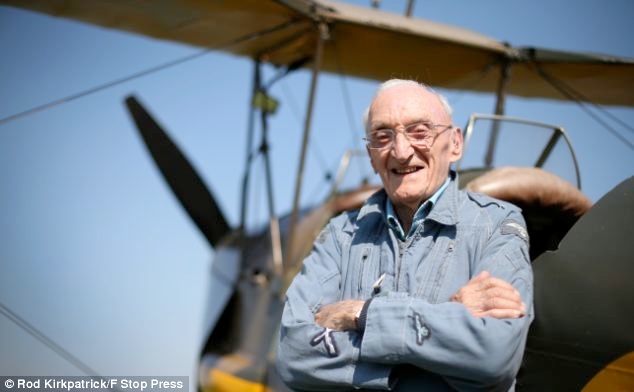
'Like riding a bike': My Lamprey is now a regular flyer after first returning to the skies last year
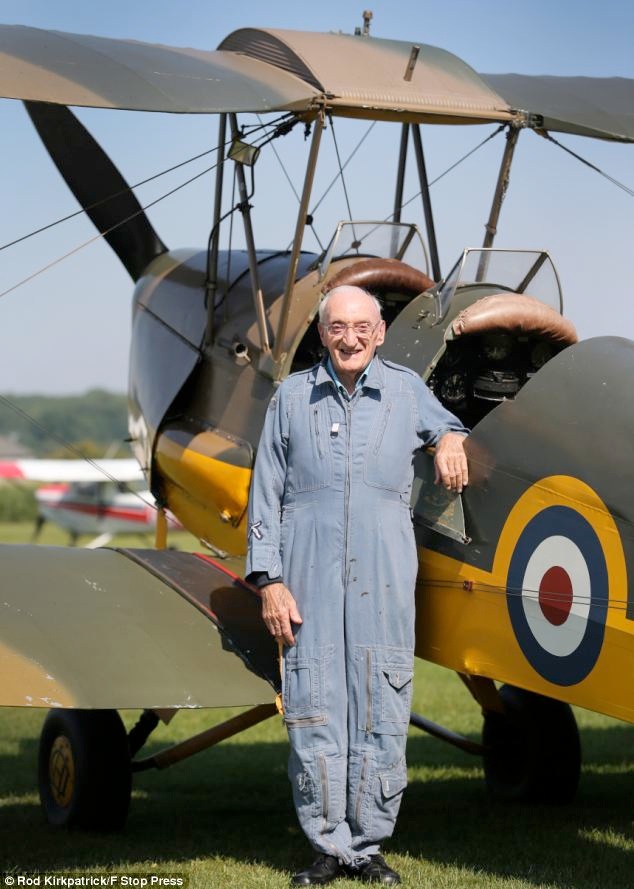
Daredevil: Mr Lamprey asks to push the plane to its limit and always suggests doing rolls, his instructor says
He began flying Cessa Cranes out of Yorktown where he passed out 2nd of 30 pilots and was awarded his wings.
He then trained on Coastal Command and practiced monitoring shipping movements in Halifax harbour in a twin-engined Avro Anson from his base on Prince Edward Island.
Mr Lamprey said: 'Later in 1944 I was given the chance to go back to Blighty to fly Sunderlands. These were giant flying boats – much bigger than a Lancaster. Based in Alness, Scotland I was second pilot, part of a crew of nine.
'The war ended and these aircraft became surplus to requirements. I flew one to Lough Erne in Ireland to be scrapped.'
After the war the pilot returned to being a fitter, later worked for Hoover and then went into business for himself.
THE TIGER MOTH BIPLANE THAT TRAINED MANY TO FLY
The Tiger Moth is a 1930s biplane, a fixed-wing aircraft with two main wings stacked one above the other, designed by Geoffrey de Havilland.
It was derived from the Gipsy Moth model in response to Air Ministry calls for a training aircraft.
From the outset, the Tiger Moth proved to be an ideal trainer - simple and cheap to own and maintain.
However, they were not the easiest to fly as control movements required a sure hand due to slow control inputs.
Instructors often preferred these flight characteristics because of the effect of 'weeding' out the inept student pilot.
The Tiger Moth was operated by the Royal Air Force and others as a primary trainer until it was replaced by the Chipmunk in 1952.
Many other nations used the Tiger Moth in both military and civil applications, and it remains in widespread use as a recreational aircraft in many countries.
It is still occasionally used as a primary training aircraft, particularly for those pilots wanting to gain experience before moving on to other larger aircraft.